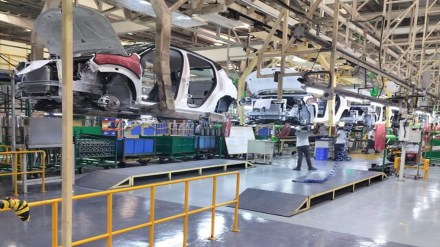To double India’s automotive component production to $145 billion by FY30, a Niti Aayog report recommends a mix of fiscal and non-fiscal measures, including operational expenditure support, cluster development, and free trade agreements (FTAs) with key markets.
In “Automotive Industry: Powering India’s Participation in Global Value Chains,” the report outlines a Vision 2030 to triple exports from $20 billion to $60 billion. Achieving this target would generate a trade surplus of roughly $25 billion, expand India’s share of the global automotive value chain from 3% to 8%, and create 2–2.5 million additional direct jobs—raising total sector employment to 3–4 million.
Despite being the fourth-largest automobile producer globally, India has a modest share of around 3% in the global automotive component trade, which amounts to approximately $20 billion. Its presence in high precision segments—engine components, drive transmission, and steering systems—remains modest, at just 2–4%. The sector’s competitiveness is hampered by high operating costs, infrastructure gaps, limited global value chain (GVC) integration, and low R&D investment.
To address these challenges, the report proposes fiscal measures such as opex support to scale manufacturing capabilities—focusing on capital expenditure for tooling, dies, and infrastructure—alongside incentives for R&D, international branding, and MSME empowerment through IP transfers. It also calls for shared facilities, including R&D and testing centres, to foster collaboration across the supply chain.
“We want to create the ecosystem rapidly. International companies need some motivation to move out of other countries. I think that’s where the fiscal support comes in,” said Niti Aayog CEO BVR Subrahmanyam.
Non-fiscal interventions include the adoption of Industry 4.0 technologies, higher manufacturing standards, joint ventures and foreign collaborations, and the negotiation of FTAs to widen market access. Simplifying regulations, enhancing worker hour flexibility, and facilitating supplier discovery and development are also highlighted.
“Most of the automotive firms are located in the US, the EU, and a few other countries. That is why FTAs are so important with the US and the EU,” said Niti Aayog member Arvind Virmani.
With the global autocomponent market valued at $2 trillion and exports at $700 billion, India’s annual vehicle production of nearly 6million positions it for significant growth—provided these reforms are implemented effectively.
